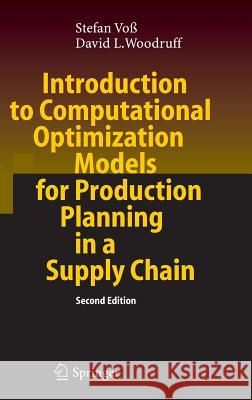Introduction to Computational Optimization Models for Production Planning in a Supply Chain » książka
Introduction to Computational Optimization Models for Production Planning in a Supply Chain
ISBN-13: 9783540298786 / Angielski / Twarda / 2006 / 260 str.
provide models that could be used by do-it-yourselfers and also can be used toprovideunderstandingofthebackgroundissuessothatonecandoabetter job of working with the (proprietary) algorithms of the software vendors. In this book we strive to provide models that capture many of the - tails faced by ?rms operating in a modern supply chain, but we stop short of proposing models for economic analysis of the entire multi-player chain. In other words, we produce models that are useful for planning within a supply chain rather than models for planning the supply chain. The usefulness of the models is enhanced greatly by the fact that they have been implemented - ing computer modeling languages. Implementations are shown in Chapter 7, which allows solutions to be found using a computer. A reasonable question is: why write the book now? It is a combination of opportunities that have recently become available. The availability of mod- inglanguagesandcomputersthatprovidestheopportunitytomakepractical use of the models that we develop. Meanwhile, software companies are p- viding software for optimized production planning in a supply chain. The opportunity to make use of such software gives rise to a need to understand some of the issues in computational models for optimized planning. This is best done by considering simple models and examples.











